
Pike fly fishing requires skill, determination, and knowledge. It’s not just about catching fish; it’s about understanding pike behaviour and learning how to attract them. Beginners have a lot to learn, while experienced anglers enjoy the excitement of feeling a strong pull on their line and seeing a pike jump out of the water.
Fly fishing for Pike is more than just catching fish. It’s an adventure that shows off nature’s beauty and offers a unique challenge. This article explores the history, techniques, gear, and tips for succeeding at pike fly fishing.
History of Pike Fly Fishing
Pike fly fishing started in the 19th century. At first, people used live bait and traditional casting to catch Pike. But then, anglers made special flies to attract Pike. They tried new techniques and materials, like bucktail streamers and big poppers, to find better ways to catch Pike with a fly.
Modern synthetic materials like EP fibres and foam popper heads transformed pike fly fishing. These materials revolutionized fly design, letting anglers make bigger, more realistic patterns that imitate natural prey. Advances in rod technology also help anglers cast these large flies accurately and powerfully, expanding the possibilities for catching a big Pike with a fly. This ongoing progress keeps pushing the limits of pike fly fishing and ensures that it stays at the forefront of angling innovation.
Understanding Pike Behavior
Understanding pike behaviour is key for successful Pike fly fishing. Pike are top predators, and their behavior changes with the seasons and their feeding habits. In spring, pike are in shallow, weedy areas preparing to lay eggs. During summer, they move to deeper water and weed beds to stay cool. In fall, pike eat more to prepare for winter. When winter comes, they are less active and hide in deep water or under ice. Anglers can use these behaviour changes to know where to fish throughout the year.
Recognizing how Pike behaves helps anglers choose the right bait and how to present it. It also helps them know when Pike are most active so they can plan their fishing trips better. Understanding pike behaviour makes it easier for anglers to catch them and helps protect the pike population.
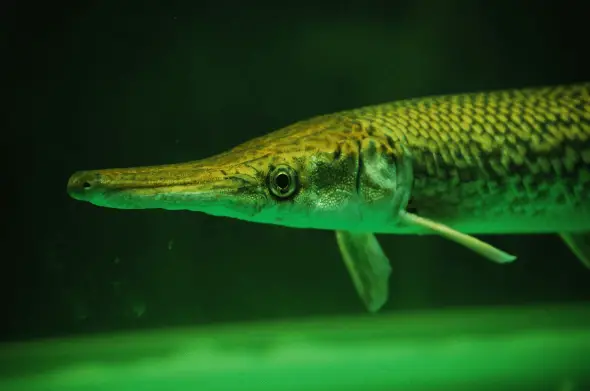
The Best Setup For Pike Fly-Fishing
For the excellent result in Pike Fly Fishing, your gear selection is crucial. Opt for a robust 9-foot rod, a sturdy reel with a smooth drag, and a weight-forward floating line – these are vital for effective pike fly-fishing. Equipped with this strong setup, you’ll be ready to tackle the demanding obstacles posed by these predatory fish.
Features of The Best Setup
The Right Rod
- Opt for a 9-foot rod with a fast action for casting large flies.
- Sturdy construction to handle the power of pike strikes.
Reel with a Smooth Drag
- A reel with a reliable drag system to handle the runs and dives of the Pike.
- Ensure it can hold sufficient backing for those epic battles.
Weight-Forward Floating Line
- This line facilitates the accurate casting of bulky Pike flies.
- The floating design allows for versatile fly presentations.
Pike Flies
- Choose large, flashy flies to entice the aggressive Pike.
- Opt for patterns mimicking the local prey for better results.
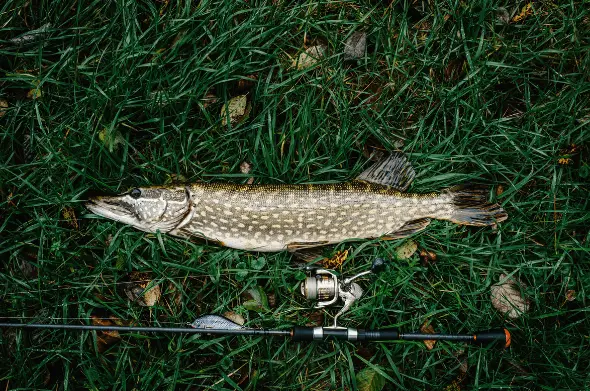
Essential Gear for Pike Fly Fishing
When you plan for a Pike fly fishing excursion, it’s crucial to have the appropriate equipment in order to ensure a fruitful outing. A key piece of gear is a sturdy leader, which is essential for preventing Pike from snapping the line. Opt for a wire or heavy fluorocarbon leader to safeguard your fly. Additionally, donning polarized sunglasses can greatly enhance visibility in murky water, thereby increasing your likelihood of successfully capturing Pike.
Effective tools are essential for successful fly fishing for Pike, with good pliers or forceps being particularly important. Given the toughness of Pike mouths, the task of removing hooks without appropriate tools can be challenging and detrimental to the fish. Utilizing high-quality pliers facilitates safe hook removal and minimizes harm to the fish’s mouth. Investing in top-notch equipment not only enhances your fishing experience but also contributes to the sustainability of fishing by alleviating stress on the fish.
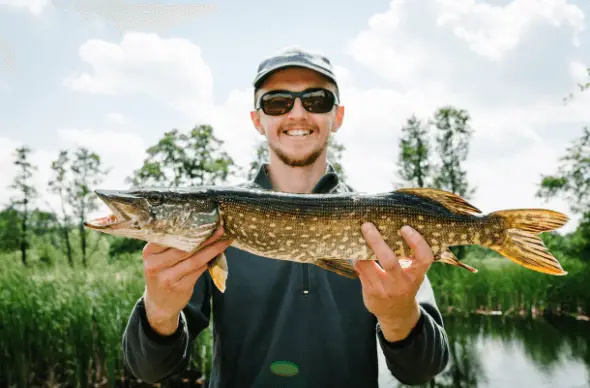
Techniques and Strategies for Success
When it comes to Pike fly fishing, mastering the correct methods and tactics can significantly increase your chances of reeling in more fish. An essential technique involves utilizing large, eye-catching flies to attract the attention of Pike. Given their aggressive nature, employing vibrant patterns and movements can entice them to strike, even if they aren’t particularly hungry.
One important strategy is to use quick retrieves with sudden pauses to imitate the irregular movement of injured prey. This action makes Pike want to attack aggressively. Also, changing how fast and deep you reel in your bait can help you find the best spots, as Pike often hides at different levels in the water depending on the temperature and light. By adjusting your techniques based on the environment and fish behaviour, you’ll be ready to catch these hard-to-find predators.
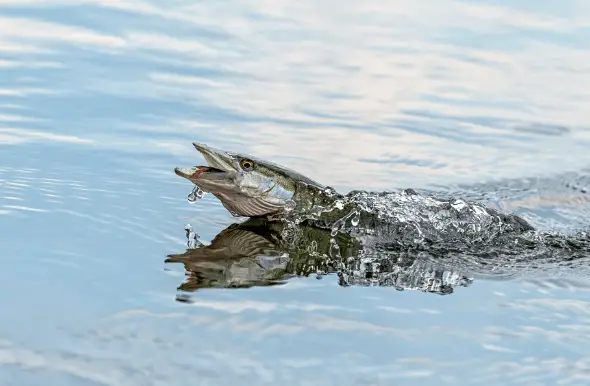
Conservation and Ethics in Pike Fly-Fishing
When fly fishing for Pike, it’s important to consider ethics and conservation. Anglers need to handle the fish carefully to prevent stress and injury. They should also follow catch-and-release rules and respect the environment and local laws to protect pike populations and the water system’s balance.
Moreover, responsible anglers know that what they do affects the water and the animals that live there. They care by using barbless hooks and being careful not to harm the environment. By following these rules and caring for the fish, they can help keep the fish population healthy for a long time.
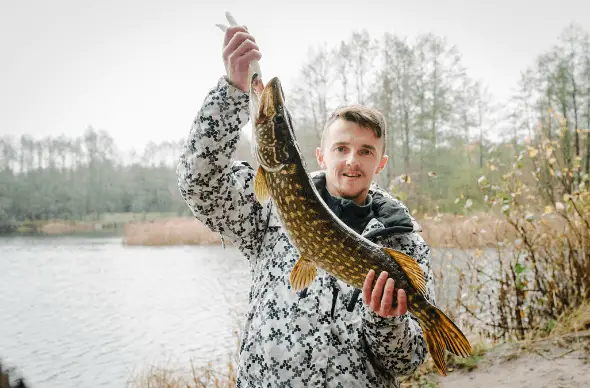
Common Challenges and How to Overcome Them
Catching Pike through fly fishing can be tough. Finding the sneaky northern Pike is hard because they like to hide in plants. To help find them, use polarized sunglasses and a fish finder. Also, catching a big pike can be tricky. You need strong gear and good technique to keep them from getting away. So, get heavy-duty fly fishing gear and practice hook-setting.
In addition, weather conditions can pose significant challenges for Pike fly fishing enthusiasts. Windy days can make casting difficult and disrupt the natural movement of flies in the water, while extreme heat or cold may affect the behaviour of Pike. Staying adaptable by selecting appropriate gear for different weather scenarios, such as using heavier flies on windy days or adjusting retrieval methods in varying temperatures, will enable anglers to adapt to changing conditions more effectively.
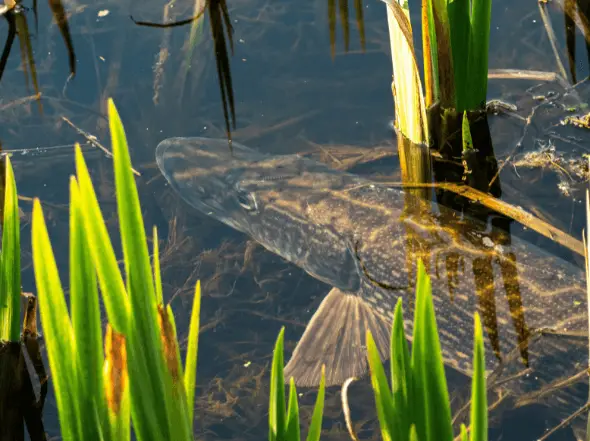
Tips for Success
Master the Art of Casting
- Practice accurate and long-distance casting to reach that elusive Pike.
- Vary your casting angles to cover more water effectively.
Imitate Prey Behavior
- Understand the prey in the area and mimic their movements.
- Pikes are opportunistic predators, so play on their instincts.
Patience Pays Off
- Pike can be stealthy, so be patient and wait for the right moment.
- Don’t rush your retrieves; a slow, enticing approach often works wonders.
Handle with Care
- Pike have sharp teeth, so use a sturdy landing net and pliers.
- Practice catch-and-release for conservation and sustainable fishing.
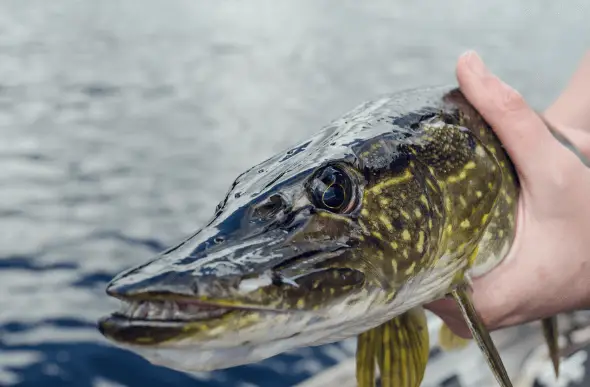
Best Locations for Pike Fly Fishing
Lake Nipissing, Canada.
Canada has many rivers and lakes, which makes it great for Pike fly fishing. You can find Pike in Lake Nipissing and remote spots in northern Ontario. The waters in Canada have lots of baitfish and plants, which make them perfect for big Pike. Catching a big northern pike in Canada is really exciting, and the scenery is beautiful. That’s why Canada is one of the best places for Pike fly fishing.
Lake of the Woods, Ontario.
In Canada, the vast northern areas provide excellent opportunities for Pike fly fishing. Whether you’re in remote places like Alberta’s Athabasca River or popular spots like Ontario’s Lake of the Woods, Canadian waters are famous for yielding large pikes that will challenge your fishing abilities. The stunning natural surroundings, including snow-capped mountains and colourful autumn foliage, add an extra layer of beauty to this thrilling adventure.
Stockholm, Sweden.
Sweden offers a picturesque setting for Pike fly fishing, with its archipelagos and tranquil coastal lakes providing a stunning backdrop. The crystal-clear waters around Stockholm are home to some of Europe’s largest Pike, offering anglers an immersive experience amidst breathtaking scenery. Anglers can enjoy testing their skills against aggressive predators while taking in the tranquillity of Sweden’s unspoiled natural beauty. With its unique topography and excellent catch-and-release policies, Sweden is a top choice for anglers seeking an unforgettable Pike fly fishing experience, whether casting in shallow weed beds or exploring secluded coves.
The Lake Iliamna, Alaska.
Alaska’s vast and untouched natural landscapes present exceptional chances for thrilling Pike fly fishing adventures. With its stunning mountainous backdrop and abundant wildlife, Alaska offers a truly untamed environment that draws adventurous anglers globally. Whether it’s the renowned Naknek River or lesser-known spots like Lake Iliamna, Alaska is home to some of the finest fishing grounds in North America for pursuing large northern Pike using fly fishing techniques.
The Amazon River, Brazil.
The Amazon River in Brazil is a haven for a wide variety of fish species and offers an exciting opportunity for pike fly fishing enthusiasts. Its vast waters and lush rainforest setting allow anglers to connect with nature while encountering fierce Amazonian predators. From the mighty peacock bass to the formidable giant wolffish, this unique location guarantees an unforgettable fishing adventure.
Conclusion
successful pike fly fishing transcends the mere act of catching fish; it is a pursuit that requires a deep understanding of pike behaviour and a mastery of specialized techniques. By delving into the secrets of successful pike fly fishing, anglers can gain valuable insights into the habits and tendencies of these elusive predators, enabling them to make more informed decisions on the water. It is through this understanding that anglers can refine their approach and improve their chances of landing that trophy pike. Ultimately, by dedicating time to studying the intricacies of pike behaviour and honing their skills, anglers can elevate their fly fishing experience to new levels of success and satisfaction.
FAQs
Q. What type of flies are best for pike fly fishing?
A. Large, flashy flies with eye-catching patterns and movements are ideal for attracting Pike.
Q. How aggressive are Pike when it comes to feeding?
A. Pike is known for their aggressive behaviour, making them more likely to strike at flashy and provocative flies.
Q. What strategies work best for catching Pike using fly fishing techniques?
A. Using a shock-and-awe approach with eye-catching patterns and movements can provoke strikes even in less active feeding conditions.
Q. Are there specific times of day that are better for Pike fly fishing?
A. Pike fly fishing can be successful throughout the day, but early morning and late afternoon tend to be prime times.
Q. Do I need special equipment for pike fly fishing?
A. Using a heavy-duty rod, strong leaders, and wire traces is recommended to handle the aggressive nature of the Pike.
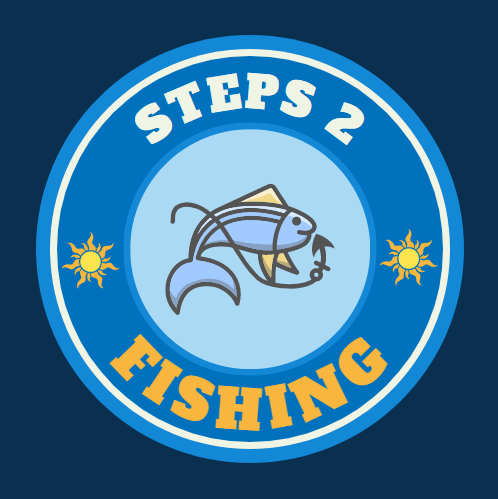

Leave a Reply